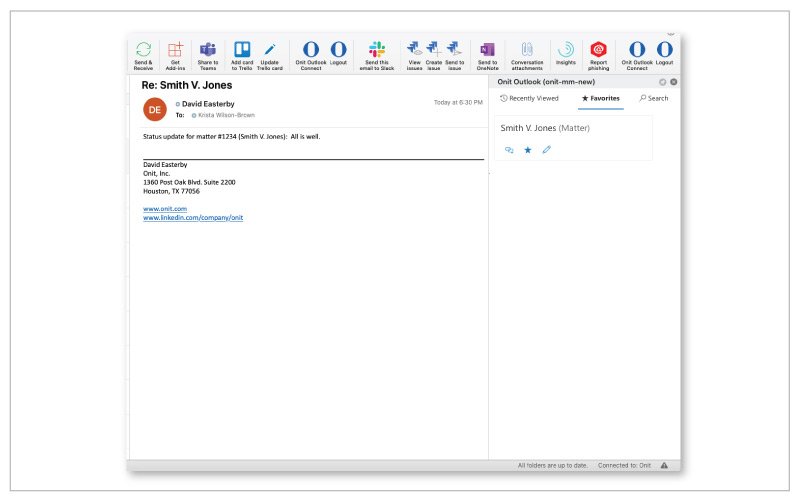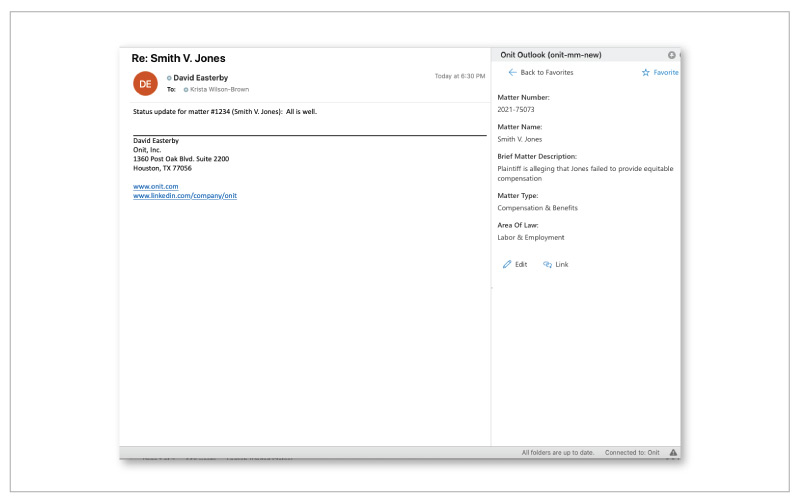
Legal contract management software can drastically streamline contract creation, review, execution and management – processes that are often fraught with complications and errors.
Data from the World Commerce & Contracting Association supports this idea. The organization recently surveyed its 70,000+ members about their contract challenges and priorities and found that 85% experience pressure for contract simplification. Another 81% said they have plans to implement contract automation. These points speak to the fact that poorly managed contracts lead to lost revenue, higher costs and more time devoted to manual tasks for all parties involved.
The Challenges of Contract Management
To understand the actual value of legal contract management software, it’s helpful to recap the inefficiencies associated with contract handling.
Manual processes open the door for errors and slow down overall contract execution. For example, approvals and negotiations done via email are often sluggish or overlooked. Untracked revisions can lead to confusion, conflict or non-compliance and a lack of standard legal language may result in lengthy review times or require lawyers to get involved.
Disparate repositories result in inefficient reporting and reduce contract visibility. Contracts spread out over different repositories, departments and geographical locations make monitoring corporate contracts holistically almost impossible. Without tracking expiring contracts and renewals, companies run the risk of compliance exposure as well as revenue loss.
Changes occur over the lifetime of a contract, including renewal dates, pricing, emerging legal requirements and other events. They require amendments and approvals from the contract parties. If these changes aren’t managed, implemented and communicated correctly and quickly, organizations can increase compliance risks for themselves and all parties involved.
How Legal Contract Management Software Helps
Legal contract management software can reduce the average hours spent on contracts by 20%, accelerate review and save on costs. It does this by:
- Automating the contract lifecycle and maximizing speed and control. Workflows can be configured and automated to support how your company interacts with the contract lifecycle. Clause libraries in CLM automatically create new and approved contract language quickly, and pre-approved templates dramatically reduce creation time. Additionally, contracts can be delivered to all appropriate parties from the CLM solution and integrate with e-signature capabilities to maximize contract execution.
- Centralizing contracts in one repository in the cloud. This makes them easier to find for appropriate parties and provides a real-time configurable dashboard that shows business-critical contract information at a glance. The legal contract management software also applies the proper metadata when a new contract is created or captured to ensure tracking and sends alerts to notify parties of key events, obligations, milestones and expiration and renewal dates.
- Allowing lawyers to work where they’re comfortable working. In this case that means enabling them to manage contract changes with a Microsoft Word Add-In. They can receive contracts in a Word doc format with change-tracking locked, save the contract directly into the CLM solution and leave remarks while checking it back in.
CLM + AI: What Is the AI Difference?
CLM centralizes contract storage and automates the request, creation, negotiation, execution and management of any type of contract.
When you combine AI with CLM, you can lower the number of contracts needing to be reviewed. This gives the reviewer the ability to speed up a review and provide consistency across processes. AI also significantly enhances contract management after execution by extracting and obtaining usable data from executed, legacy and third-party paper contracts.
AI and Legal Contract Management Software: What to Look For and How to Get Started
Not all CLM AI is created the same. To get the full benefits of contract lifecycle management solutions, you should carefully evaluate AI for both the pre- and post-signature phases of contract management.
If you’re not sure what to look for in an AI-powered CLM solution, we’ve got you covered.
We’ve prepared a Quick Start Guide that highlights the ideal legal contract AI features you need if you want to reduce inefficiencies, errors and time spent on contracts without sacrificing compliance or visibility. It also provides valuable expert tips to help you get started.
The guide includes information such as:
- Should you look for pre-trained AI?
- What redlining capabilities should contract AI offer?
- Can AI offer interactive checklists to accelerate review?
- How can AI repaper contracts for regulatory, policy and commercial changes?
- Can AI help you analyze legacy contract data for better contract management?






 The Onit email integration is the shortcut you need to handle your email and work in the same place
The Onit email integration is the shortcut you need to handle your email and work in the same place




